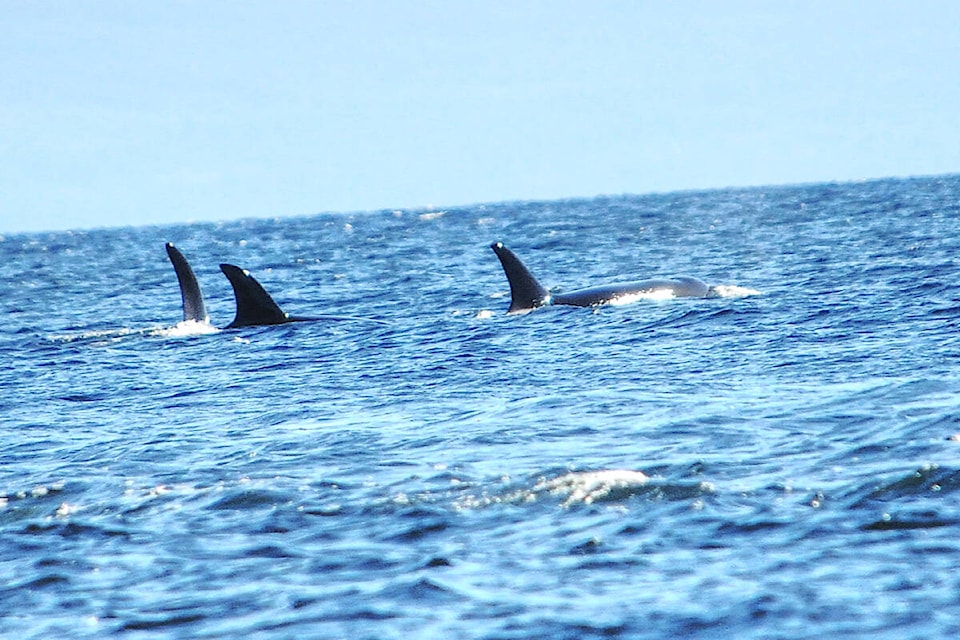I recently had an opportunity to experience what birdwatching is all about.
And it opened my eyes and educated me about the many species of birds that exist here in Parksville Qualicum Beach and area. I had no idea.
BC Nature recently conducted a sea survey that involved a nice cruise around the nearby islands with the goal of recording the activities of Brant geese and other coastal birds out on the water that can’t be observed from shore. We stopped around Ballenas Island, Schooner Reef, Mistaken Island, Yeo Islands, Northwest Bay and Nuttal Bay.
The survey was led by birdwatching expert Liam Ragan, who is BC Nature’s provincial co-ordinator for important bird areas.
I was invited to join the trip that also included members of the Arrowsmith Naturalists, who conduct Brant counts and surveys in the Parskville Qualicum Beach area, and Kyla Sewards of the VIU Mount Arrowsmith Biosphere Region Research Institute.
They were ready. They brought with them binoculars and some had long-lens cameras with the objective of documenting the birds that are out there. The goal is to have as many eyes scouring the waters and pointing them out to be recorded and logged.
I was offered binoculars but stubbornly chose to just use my trusty camera. I should have accepted it since when they started spotting birds at a distance while the boat was motoring on, no matter how hard I strained my eyes, I couldn’t see it. Not even with my camera.
Ragan would yell “it’s at 2 o’clock from the boat.”
I would look and look but with very little success. By the the time I spotted the fowl creature, they flew away or dove underwater. This went on throughout the trip with people spotting birds, informing everyone, with Ragan naming what they are, and commenting “good eye.”
This made me wonder, how on earth do they spot those birds when we’re in the middle of the ocean with a blue -coloured surface that was not smooth at all, as it made our boat bob wildly up and down?
Ragan explained he has been doing this for more than a decade and has developed an instinct for identifying birds by their colour and shape and he can tell what species they are.
It’s an automatic reaction, he said, that is deeply etched in his mind. For me, that’s a challenging task.
The only success I had during the trip was spotting a pod of orcas.
I excitedly yelled “whales!” It was my proud moment.
I learned so much about this whole survey and was surprised to learn about the myriad of bird species that are right here in our area.
Ragan said after the trip we had achieved the objective of spotting 10 species on his checklist while also observing 39 other types of birds.
He was also pleased to be able to spot one western grebe, which was one of the species he was targeting.
We were also able to see some endangered and vulnerable species such as the marbled murrelet, horned grebe and long-tailed duck.
READ MORE: Court ruling called a win for B.C.’s threatened migratory bird population
“The area here is a globally recognized important bird and biodiversity area,” said Ragan. “What that means is it’s a global network of sites recognized for having, in rough terms, at least one per cent of the species’ population year to year.”
This includes Brant geese, monitored yearly by the Arrowsmith Naturalists which covers the full length of the Parksville Qualicum Beach Wildlife Management Area.
Ragan said the goal is to protect those migrating bird and when their numbers dwindle, they have to find out what is causing it to go down.
“You need to protect where they spend their winter, you need to protect where they breed, and you need to protect every little marsh, sandlot and what have you that they’re feeding at along the way,” Ragan explained. “If any one of those links in the chain gets changed into a Walmart, all of the sudden people in Nunavut will be saying, ‘where is all our shorebirds going?’ So, it is a way of figuring out where is critical if we want these species to continue to exist.”
The experience truly enlightened me and has helped me open my eyes and observed my surroundings more in depth. We tend to admire what’s often visible on the surface but if we dig deeper, strain our eyes a bit, you’d discover the avian kingdom that’s right there and you probably didn’t know exists. As the saying goes, “stop and smell the roses.” I now truly see the meaning of the phrase.
Michael Briones is a reporter with the Parksville Qualicum Beach News.
